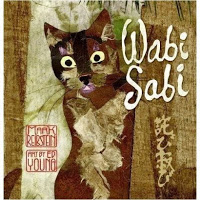 I’ve recently become intrigued by the Japanese world view called wabi sabi – and not just because it’s fun to say it, or because it sounds like wasabi, yum. Wabi sabi is the art of appreciating and embracing life’s imperfections. The history and details get somewhat complicated – all that lost in translation stuff – but as usual Wikipedia does a good job at narrowing things down. Leonard Koren, the author of Wabi-Sabi: for Artists, Designers, Poets & Philosophers, tried to find a precise definition for the concept while researching his book; he ended up writing his own: Wabi sabi is the beauty of things imperfect, impermanent, and incomplete, the antithesis of our classical Western notion of beauty as something perfect, enduring, and monumental.
I’ve recently become intrigued by the Japanese world view called wabi sabi – and not just because it’s fun to say it, or because it sounds like wasabi, yum. Wabi sabi is the art of appreciating and embracing life’s imperfections. The history and details get somewhat complicated – all that lost in translation stuff – but as usual Wikipedia does a good job at narrowing things down. Leonard Koren, the author of Wabi-Sabi: for Artists, Designers, Poets & Philosophers, tried to find a precise definition for the concept while researching his book; he ended up writing his own: Wabi sabi is the beauty of things imperfect, impermanent, and incomplete, the antithesis of our classical Western notion of beauty as something perfect, enduring, and monumental.
I first learned about wabi sabi from a kid’s book, about a cat named Wabi Sabi and who searches for the true meaning of his name. The book opens from bottom to top vs. right to left, contains beautiful watercolor illustrations, and the story has wonderful haikus woven in.
In a culture obsessed with perfection, it seems like we could all use a daily dose of wabi sabi. It’s a reminder that beauty may not be super obvious, nor does it need to be absolutely flawless. There’s a reason why we adore comfy, almost worn-out sweats, and feel like we look beautiful after a sweaty, messy yoga class, right?
My five year old daughter doesn’t realize that she understands wabi sabi better than most adults, and has been giving her mama lessons. When we food shop or pick up our crop share, she’s the one choosing the not-so-perfect produce. It’s reminded me how somewhere along the line, I subscribed to the idea that a tomato must be red, round and perfectly symmetrical – so not natural! Recently I found myself trying to convince her to select a different, “prettier” pumpkin at the farm, when I had to mentally slap myself: WABI SABI! There is beauty in what’s natural! Apparently I need to redefine my aesthetic a bit.
What do you love that is wabi sabi? Please share your comments!